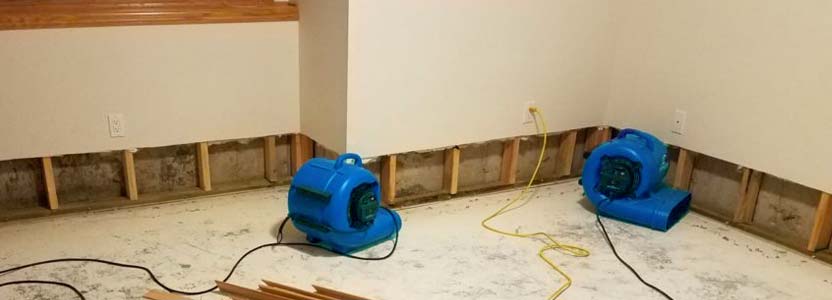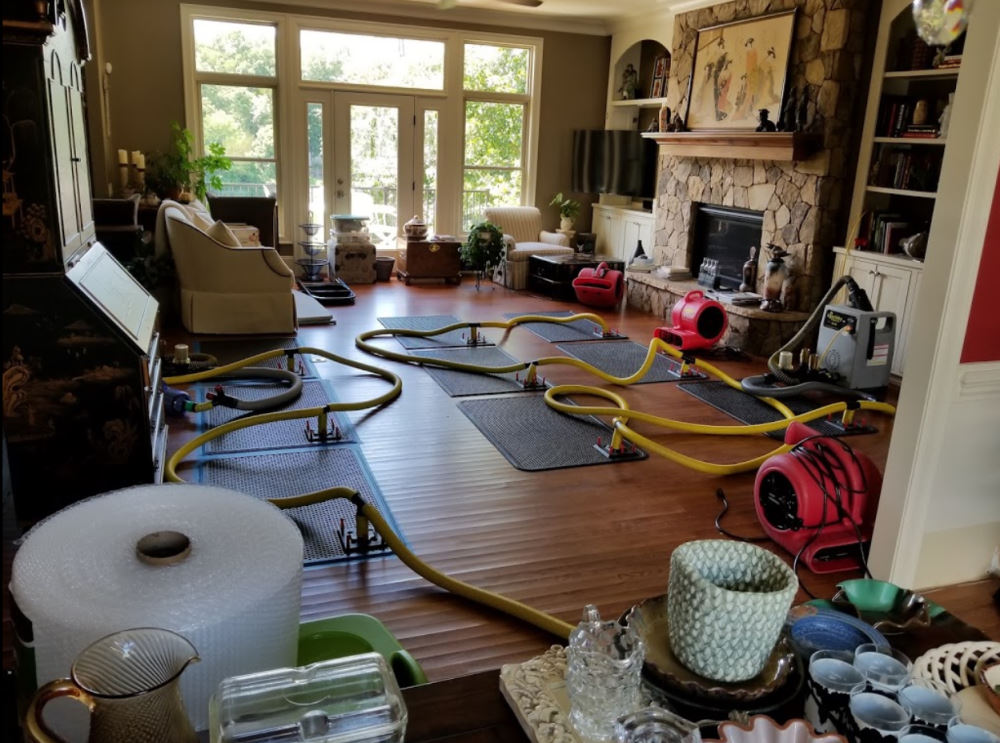Specialist Water Damage Restoration Philadelphia: Rapid Feedback, Lasting Outcomes
Wiki Article
Emergency Situation Water Damage Reconstruction: Swift Feedback to Minimize Further Damage
What exactly does emergency situation water damage restoration require? By comprehending the urgency and comprehensive nature of this procedure, you will gain useful insights right into exactly how professionals take on emergency water damage, ensuring a swift and effective feedback.Relevance of Swift Feedback
Swift action is of utmost significance in water damage restoration to decrease additional damage and reduce prospective dangers. When water damages takes place, whether due to a burst pipe, an all-natural calamity, or any kind of various other unexpected event, time is essential. The longer water sits in a structure, the even more damages it can trigger. This is why it is essential to act swiftly and efficiently to remove the water and begin the reconstruction procedure.
One of the primary factors swift response is vital in water damages reconstruction is to prevent the growth of mold and mildew. Mold and mildew not just creates more damage to the structure of the structure but also positions health and wellness threats to owners.
Water damage can be devastating, specifically when it affects personal things of monetary or sentimental value. Performing quickly enables specialists to assess the damages and execute proper restoration strategies to recover as much as possible.
Assessing the Level of Damages

Throughout the evaluation, remediation professionals thoroughly examine the damaged location to identify visible signs of damages, such as water discolorations, distorted materials, and mold development. They likewise utilize specialized tools to identify concealed damage, such as moisture meters and thermal imaging electronic cameras. This detailed assessment allows them to properly figure out the extent of the damages and establish a tailored reconstruction plan.
Evaluating the level of water damages is vital due to the fact that it assists professionals prioritize their initiatives. They can determine locations that need prompt interest, such as standing water elimination and drying, to protect against additional damages and reduce the threat of mold development. They can also establish the areas that require repairs or substitute, ensuring that no damages goes unattended or unnoticed.

Water Extraction and Drying Out Process
The water removal and drying out process is a critical action in water damage repair, as it includes the elimination of excess water and the complete drying of the damaged area to stop more damages and mitigate the risk of mold growth. After analyzing the degree of the water damages, the next step is to remove the water from the afflicted location. This is usually done making use of customized tools such as vacuums, pumps, and dehumidifiers. These devices are created to effectively and properly get rid of water from various surfaces, including walls, rugs, and floorings.Once the excess water has been drawn out, the drying out procedure starts. This action is crucial in preventing secondary damage, such as structural damage and the growth of mold and mildew. High-powered fans and dehumidifiers are used to circulate air and remove moisture from the air and surfaces. The drying process might take numerous days, depending on the extent of the water damages and the materials included.
It is essential to make certain that the damaged location is totally dry before waging any kind of fixings or restoration. Failing to extensively dry out the area can result in long-term problems, including damaged frameworks, mildewy odors, and the development of mold and mildew and mildew. Professional water damages repair companies use dampness discovery equipment to make certain that the afflicted area is entirely dry before continuing to the following step.
Mold Prevention and Removal
Effective mold avoidance and removal are critical in water damage restoration to make certain the security and stability of the damaged area. home inspector philadelphia. When water damage takes place, whether from a burst pipeline, flooding, or a leaking roofing system, it develops a suitable environment for mold development. Mold can start to create within 24 to 48 hours after water damage, and if left neglected, it can spread quickly and create serious wellness dangersTo avoid mold development, it is essential to deal with water damages without delay. The primary step is to determine and fix the resource of the water invasion. When the resource is dealt with, the damaged area should be completely dried to avoid dampness from sticking around. This might involve making use of dehumidifiers, air movers, and other specific devices to eliminate excess wetness from the air and surface areas.
In situations where mold growth has already taken place, removal is essential to remove the mold and mildew and stop its return. This entails the cautious removal and disposal of affected materials, such as drywall or carpet, to ensure that all traces of mold and mildew are gotten rid of. It is necessary to keep in mind that mold remediation ought to be performed by professionals that have the needed training and devices to safely get rid of and manage mold.
Bring Back the Affected Area

First of all, it is crucial to extensively dry out the directory location to avoid any further damage and to prevent the development of mold and mildew and mold. This might involve making use of specialized drying out tools, such as dehumidifiers and industrial-grade followers, to get rid of all dampness from the afflicted surface areas.
When the area is completely dry, the restoration process can start. This might include changing or fixing harmed structural elements, such as ceiling, floor covering, or drywall floor tiles. It is crucial to attend to any underlying issues that might have created the water damage, such as leaky pipelines or malfunctioning plumbing, to avoid future incidents.
In addition, recovering the afflicted area might likewise include painting walls, changing harmed fixtures, and extensively cleaning and sanitizing the room. This guarantees that not only is the location structurally sound, yet it is likewise aesthetically pleasing and secure for occupancy.
Verdict
Analyzing the extent of damage permits for reliable water extraction and drying procedures to be implemented. In general, prompt activity and comprehensive repair actions are key to alleviating the adverse influences of water damage.Swift reaction is of utmost value in water damages restoration to minimize additional damage and alleviate possible risks.During the assessment, remediation experts extensively analyze the afflicted location to recognize visible indicators of damages, such as check that water discolorations, deformed products, and mold and mildew development.The water removal and drying out procedure is a crucial step in water damage restoration, as it involves the elimination of excess water and the detailed drying out of the damaged location to protect against more damages and alleviate the danger of mold growth. After evaluating the extent of the water damage, the following action is to remove the water from the afflicted area.Effective mold and mildew avoidance and removal are important in water damage remediation to ensure the safety and honesty of the afflicted location.
Report this wiki page